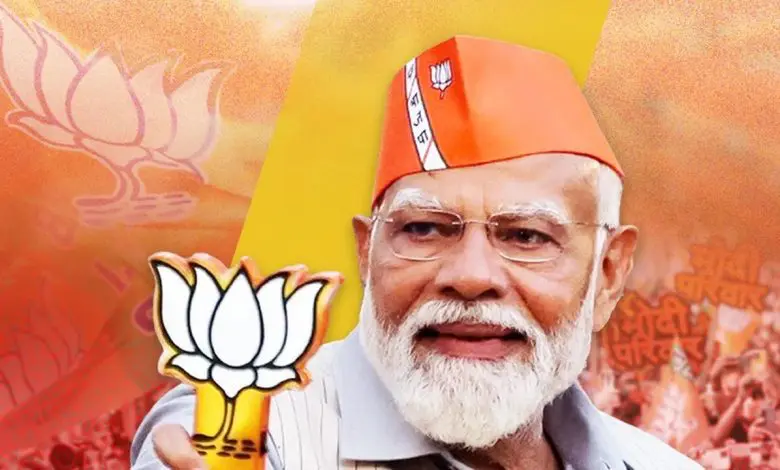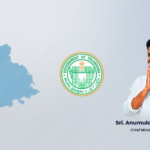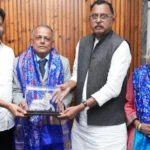As global politics undergoes massive transformation and redefinition, India’s Prime Minister Narendra Modi is being compared to other Indian prime ministers in various ways. Some compare him to Mrs. Indira Gandhi, while others contrast his tenure with those who held office the longest. Another comparison examines how his 11-year governance stacks up against other prime ministers’ first 11 years—what the nation gained and how they managed public sentiment and their parties.
Recently, as Prime Minister Narendra Modi completed 11 years in office, reactions ranged from celebration to criticism. Questions arose over whether he would follow BJP’s internal rule of stepping aside at 75, implying a potential shift in responsibilities beyond the PM’s role.
Debates also center on his legacy. Supporters highlight his achievements, while opponents argue that public welfare has suffered under his leadership. Comparisons with past prime ministers, particularly Indira Gandhi, dominate these discussions.
On foreign relations, critics note India’s ongoing struggles with Pakistan, China, and Bangladesh, contrasting it with Indira Gandhi’s decisive action in creating Bangladesh. However, geopolitical contexts then and now differ significantly.
Trump’s Threats and Opposition Silence
India faces diplomatic challenges not only from neighboring nations but also from statements by U.S. President Donald Trump that undermine Indian interests. Questions persist about why Modi hasn’t addressed Trump’s remarks on Operation Sindoor, while opposition leaders remain silent on whether India halted the operation voluntarily.
Critics also question why Pakistan-occupied Kashmir (PoK) wasn’t reclaimed during non-BJP regimes if India had previously defeated Pakistan. The debate often overlooks Indira Gandhi’s Emergency, which severely restricted civil liberties, unlike current efforts to restore peace in conflict zones like Jammu and Kashmir post-Article 370.
Modi vs. Indira Governance: Security, Economy, and Vision
Article 370 functioned as an undeclared emergency for Kashmiri Hindus. Under Indira’s rule, terrorism thrived in Punjab and Kashmir, culminating in Operation Blue Star, whose repercussions linger today with Khalistani extremism abroad. In contrast, Modi’s tenure has seen reduced Naxalite violence in Chhattisgarh, Jharkhand, Odisha, and Telangana, fostering public safety.
An estimated 10,000 Naxalites have either reintegrated into society or abandoned violence. Critics accuse Modi of privatizing key state enterprises, contrasting it with Indira’s bank nationalization, which failed to prevent scandals in public-sector banks today. Private-sector growth, however, has boosted employment and global demand for Indian products.
Modi’s Policies: Development and Global Acclaim
Modi’s rise from a tea-seller resonates as a symbol of aspirational India, unlike Indira’s inherited political advantage. His policies receive global praise for market-friendly reforms, contrasting with the Nehru-Gandhi era’s statist approach. Infrastructure development—replacing congested intersections with highways—exemplifies this shift.
The success of the Vande Bharat Express in Kashmir and overcrowded pilgrimage sites in Uttarakhand reflect improved connectivity and tourism. Yet, as society grows more self-centric, the relevance of such comparisons diminishes.
Operation Blue Star
Operation Blue Star was a military operation carried out by the Indian government in June 1984 to remove Sikh militants, including Jarnail Singh Bhindranwale, from the Golden Temple complex in Amritsar, Punjab. The operation aimed to regain control of the sacred Sikh site, which had been fortified with weapons, but it resulted in heavy casualties and damage to the temple. The event deeply angered the Sikh community and led to increased tensions, including the assassination of Prime Minister Indira Gandhi later that year by her Sikh bodyguards.
Article 370
Article 370 was a constitutional provision in India that granted special autonomous status to the region of Jammu and Kashmir, allowing it to have its own constitution, flag, and decision-making rights except in defense, foreign affairs, and communications. Introduced in 1949, it was a temporary measure meant to integrate the region after India’s independence and partition. In August 2019, the Indian government revoked Article 370, reorganizing Jammu and Kashmir into two union territories and ending its special status, a move that sparked significant political and social debate.
Vande Bharat Express
The **Vande Bharat Express** is India’s semi-high-speed, self-propelled train, introduced in 2019 as a symbol of modern rail travel under the “Make in India” initiative. Designed for efficiency and comfort, it connects major cities like Delhi, Mumbai, and Bengaluru, reducing travel time with speeds up to 180 km/h. Named to celebrate national pride (“Vande Bharat” means “Salute to India”), it reflects India’s advancements in indigenous railway technology.
Jammu and Kashmir
Jammu and Kashmir is a region in northern India known for its stunning landscapes, including the Himalayas and picturesque valleys like Kashmir. Historically, it was a princely state under British rule before acceding to India in 1947, though its status has been disputed between India, Pakistan, and China since then. The region is culturally diverse, blending Hindu, Muslim, and Buddhist influences, with landmarks such as the Amarnath Cave and Dal Lake.
Pakistan-occupied Kashmir (PoK)
Pakistan-occupied Kashmir (PoK), also known as Azad Jammu and Kashmir (AJK) in Pakistan, is a region administered by Pakistan since the 1947 partition of India, though India claims it as part of its Jammu and Kashmir territory. The area has been a point of conflict between India and Pakistan, with its status remaining disputed under UN resolutions calling for a plebiscite. PoK is governed separately by Pakistan but lacks full constitutional integration, maintaining a semi-autonomous status.
Operation Sindoor
“Operation Sindoor” refers to a military operation conducted by the Indian Army in 1971 during the Bangladesh Liberation War. The operation aimed to secure key areas in present-day Bangladesh, contributing to India’s broader efforts to support Bangladeshi independence from Pakistan. While not a cultural site, it remains a significant event in India’s military history and the broader narrative of the 1971 war.
Uttarakhand
Uttarakhand, a state in northern India, is renowned for its stunning Himalayan landscapes, sacred rivers, and revered Hindu pilgrimage sites like the Char Dham (Badrinath, Kedarnath, Gangotri, and Yamunotri). Formed in 2000 after separating from Uttar Pradesh, it is often called the “Land of the Gods” due to its deep spiritual significance and numerous temples. The region also boasts rich biodiversity, including Jim Corbett National Park, India’s oldest national park.
Chhattisgarh
Chhattisgarh is a state in central India known for its rich tribal culture, dense forests, and ancient heritage. Historically, it was part of the Maurya and Gupta empires and later ruled by the Haihaya and Kalachuri dynasties, leaving behind notable temples like the Bhoramdeo and Sirpur. Today, it is celebrated for its vibrant festivals, traditional crafts, and natural attractions like waterfalls and wildlife sanctuaries.






